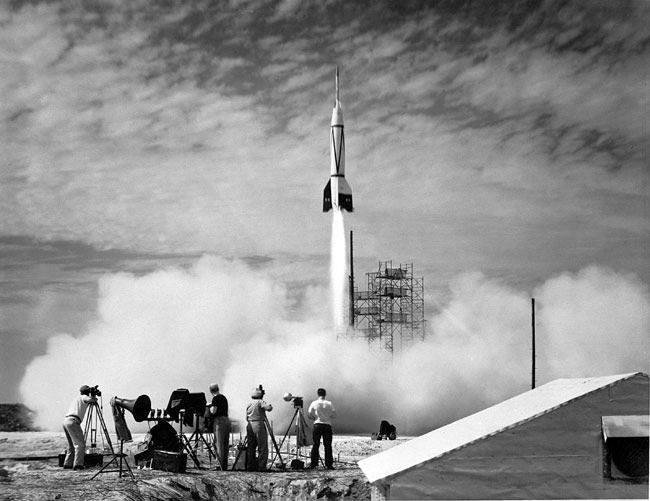On Sept. 6, 1947, a rocket launched from an aircraft carrier for the first time. The V-2 rocket was captured from a German manufacturing site by the Allied forces at the end of World War Two. V-2s were the world’s first long-range guided ballistic missile. Wernher von Braun, a famous aerospace engineer, invented them for Nazi Germany before he was secretly moved to the U.S. and started working for NASA. Von Braun and the seized V-2 missile parts were brought to the White Sands Missile Range in New Mexico, where…
Read MoreMonth: September 2022
After 45 years, the 5-billion-year legacy of the Voyager 2 interstellar probe is just beginning
This article was originally published at The Conversation. (opens in new tab) The publication contributed the article to Space.com’s Expert Voices: Op-Ed & Insights. Alice Gorman (opens in new tab), Associate Professor in Archaeology and Space Studies, Flinders University On Aug. 20, 1977, 45 years ago, an extraordinary spacecraft left this planet on a journey like no other. Voyager 2 was going to show us, for the first time, what the outer solar system planets looked like close-up. It was like sending a fly to New York City and asking it to report back. Voyager…
Read MoreOn This Day In Space: Sept. 5 1977: Voyager 1 launches to the outer solar system
On Sept. 5, 1977, Voyager 1 began its epic journey through deep space with a glorious morning launch from Cape Canaveral, Florida. Voyager 1 initially launched on a mission to explore the outer planets. After flying by Jupiter and Saturn in 1979 and 1980, the spacecraft took a sharp turn and started heading straight out of the solar system. Voyager 1 Spacecraft’s Road to Interstellar Space: A Photo Timeline Voyager 1, launched in September 1977, is currently exploring the farthest edges of the solar system. (Image credit: NASA) (opens in…
Read MoreNASA’s iconic Voyager 1 marks 45 years in space
NASA’s venerable Voyager 1 spacecraft has reached a key milestone. The Voyager 1 probe launched 45 years ago, on Sept. 5, 1977, just weeks after its twin Voyager 2 but soon overtaking it. The two spacecraft were designed to fly past Jupiter and Saturn, taking advantage of a favorable solar system alignment. At the time, no one expected the spacecraft to still be working more than four decades later. But now, the Voyagers are stretching toward a round 50 years in space. Voyager 1 is currently more than 14.6 billion…
Read More‘Star Trek: Lower Decks’ Season 3 is here and you can watch the first episode free
The cartoon chaos that is “Star Trek: Lower Decks” has returned for its third season and you can watch the first episode free on YouTube. At the end of the second season we saw Captain Freeman (Dawnn Lewis) being arrested and led away in handcuffs by a team from Starfleet Command for the destruction of the Pakled planet, Ensign Boimler (Jack Quaid) gets to swim about with two beluga whales and Ensign Mariner (Tawny Newsome) almost drifts out into space, but is rescued at the last minute by her rival,…
Read MoreDon Lind, shuttle astronaut whose moon mission was canceled, dies at 92
Don Lind, a former NASA astronaut who helped plan humanity’s first moonwalk before launching on the space shuttle, has died at the age of 92. Lind’s death on Tuesday (opens in new tab) (Aug. 30) was first reported by the Herald Journal in Logan, Utah. “Don is as close to the true ‘Renaissance Man’ — Leonardo da Vinci’s ideal of a man who could do everything and do it well — as exists in our day and age,” his family wrote in an obituary (opens in new tab) issued on…
Read MoreSee the moon’s Mare Imbrium mountains on Sunday (Sept. 4)
On Sunday, Sept. 4, a spectacular mountain range on the moon will move into view for skywatchers. The mountains mark the rim of Mare Imbrium, also known as the great Imbrium Basin, a vast lava plain on the lunar surface created by a massive impact from space nearly 4 billion years ago. The Mare Imbrium is the largest basin on the near side of the moon with a diameter of approximately 721 miles (around 1160 kilometers). Though just around half the size of the South-Pole-Aitken Basin on the moon’s far…
Read MoreHubble Space Telescope captures stunning photo of a galaxy with a strange shape
Bright red “blossoms” of star formation stand out in a new image of an unconventional galaxy. A new photo from the Hubble Space Telescope captures a dwarf irregular galaxy called NGC 1156. Located 25 million light-years from Earth in the constellation Aries, NGC 1156 boasts a unique structure unlike most other galaxies — a “marvel of galactic morphology,” according to a statement from the European Space Agency (ESA), which is a partner on the mission. “Its thousands of bright stars evoke a spiral galaxy, but it lacks the characteristic ‘winding’…
Read MoreNASA to Provide Artemis I Launch Update Saturday
Following the Artemis I launch scrub Saturday from Launch Complex 39B at NASA’s Kennedy Space Center in Florida, the agency will hold a media briefing no earlier than 4 p.m. EDT on Saturday Sept. 3, to discuss mission status.
Read MoreThe Artemis 1 mission marks the start of a new space race to mine the moon
This article was originally published at The Conversation. (opens in new tab) The publication contributed the article to Space.com’s Expert Voices: Op-Ed & Insights. Cassandra Steer (opens in new tab), Deputy Director, Institute for Space (InSpace), Australian National University NASA plans to launch the Artemis 1 lunar mission this Saturday (Sept. 3) after a first attempt earlier in the week was canceled at the last minute due to engine trouble. The mission is an exciting step towards returning humans to the moon for the first time since 1972. But this time it’s not just about putting our…
Read More

